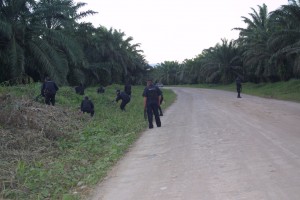On December 4th, the Compliance Advisor Ombudsman (CAO) – the independent accountability mechanism for the private-sector lending arm of the World Bank Group – announced its decision to audit the International Financial Corporation’s (IFC) investment in Ficohsa, Honduras’ third largest bank.
In April 2012, the CAO had triggered an audit of Corporación Dinant in response to allegations that private and public security forces under Dinant’s control or influence used violence against farmers on and around Dinant plantations.

The results of the Dinant audit have been delivered to World Bank President Jim Kim, but have yet to be made public. While reviewing the IFC’s direct investment in Dinant, the CAO uncovered that IFC had also made indirect investments in Dinant through Ficohsa.
Timeline:
- 2008: IFC begins investment in Ficohsa
- 2009: IFC begins investment in Dinant
- 2010: Conflict and allegations surrounding Dinant’s involvement in fomenting violence in the Aguan Valley become public
- January 2011: President of the IFC sends a letter to Honduran President Pepe Lobo regarding the situation at Dinant
- May 2011: IFC makes $70 million investment in FICOHSA, despite its knowledge of Dinant being its biggest borrower and the deteriorating situation surrounding Dinant on the ground

This is not the first time that financial intermediaries, such as Ficohsa, have come under close scrutiny. In February this year, the CAO published a study demonstrating that more than 40% of the IFC’s total lending is invested in financial intermediaries for which it “knows very little” about the environmental or social impacts. The appraisal of the IFC’s investment in Ficohsa shows that even when the IFC does know the risks, it turns a blind eye to the impacts of its lending.
Consider this: IFC knew that Ficohsa was financing Dinant, it knew that Dinant was trouble, and yet it continued to invest in Ficohsa. It’s time for the IFC to engage constructively with the CAO as they undertake the audit and issue a response that is proportionate to the findings.
The Dinant project has also been targeted by public interest groups because its Aguan biogas recovery project was registered in 2011 under the Clean Development Mechanism (CDM), a United Nations carbon offsetting scheme. The CDM Executive Board had argued that it had no mandate to address the issue of human rights and that this is the role of the host country. Currently, the UN does not have a process that allows communities to seek recourse for the harms associated with CDM projects, or a process to de-register projects where there are human rights violations as in the case of the Aguan biogas project.Tweet
Originally posted on December 19, 2013.
